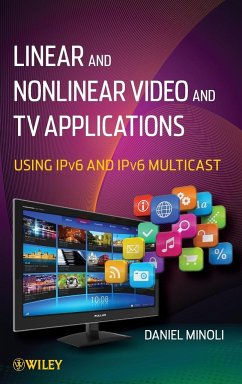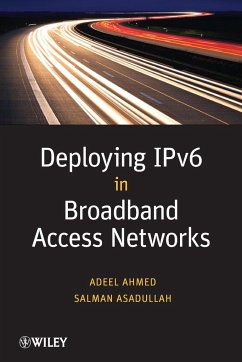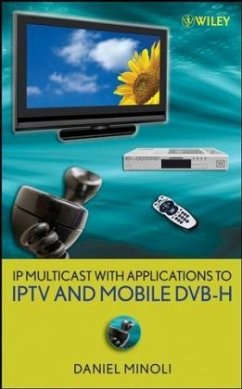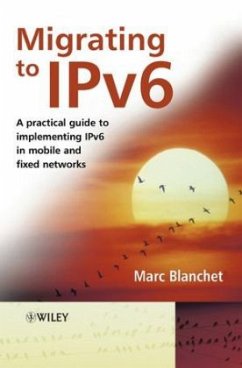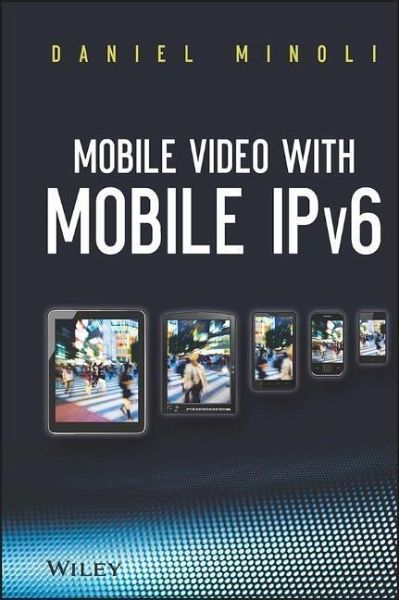
Mobile Video with Mobile Ipv6
Explores the technology, protocols, and deployment strategies for IPv6-based mobile videoIP-based video distribution is expanding in the number of delivery methods (streaming, IPTV), the content creation methods (social media, user-generated video, web-original video), and the display methods (smart TVs, smartphones, tablets). Until 2011, mobile technology was supported largely using IP Version 4 (IPv4), but increasing demand left only 1 percent of address space in the pool of available IPv4 address blocks. IPv6 was created to address next-generation services and the exploding user base. It is...
Explores the technology, protocols, and deployment strategies for IPv6-based mobile video
IP-based video distribution is expanding in the number of delivery methods (streaming, IPTV), the content creation methods (social media, user-generated video, web-original video), and the display methods (smart TVs, smartphones, tablets). Until 2011, mobile technology was supported largely using IP Version 4 (IPv4), but increasing demand left only 1 percent of address space in the pool of available IPv4 address blocks. IPv6 was created to address next-generation services and the exploding user base. It is beginning to be adopted by Google, Facebook, Yahoo!, and Akamai, among others. The deployment of IPv6 coincides with a rapid adoption of mobile devices such as smartphones and tablets.
Mobile Video with Mobile IPv6 is the first book to address Mobile IPv6 with applications to linear and non-linear video distribution. It provides an overview of the current mobile landscape, then delves specifically into the capabilities and operational details of IPv6. The book also addresses 3G and 4G services, the application of Mobile IPv6 to streaming and other mobile video outputs, and takes a look at the future of mobile video.
This timely guide:
Provides a comprehensive overview of the Mobile IPv6 protocol, including the Basic Mode and its various extensions
Offers practical suggestions for cost-effective entertainment delivery within existing service provider networks
Considers evolving shifts in consumer viewing habits
Suggests new revenue-generating services that can be brought to the market
Examines security considerations for Mobile IPv6
Mobile Video with Mobile IPv6 is an important resource for planners, CTOs, and engineers at broadcast TV, cable TV, and satellite operations, as well as Internet and ISP providers, telecommunications companies, and wireless providers. It is also a useful tool for set top box developers, storage vendors, content developers, content distribution outfits, and content aggregators.
IP-based video distribution is expanding in the number of delivery methods (streaming, IPTV), the content creation methods (social media, user-generated video, web-original video), and the display methods (smart TVs, smartphones, tablets). Until 2011, mobile technology was supported largely using IP Version 4 (IPv4), but increasing demand left only 1 percent of address space in the pool of available IPv4 address blocks. IPv6 was created to address next-generation services and the exploding user base. It is beginning to be adopted by Google, Facebook, Yahoo!, and Akamai, among others. The deployment of IPv6 coincides with a rapid adoption of mobile devices such as smartphones and tablets.
Mobile Video with Mobile IPv6 is the first book to address Mobile IPv6 with applications to linear and non-linear video distribution. It provides an overview of the current mobile landscape, then delves specifically into the capabilities and operational details of IPv6. The book also addresses 3G and 4G services, the application of Mobile IPv6 to streaming and other mobile video outputs, and takes a look at the future of mobile video.
This timely guide:
Provides a comprehensive overview of the Mobile IPv6 protocol, including the Basic Mode and its various extensions
Offers practical suggestions for cost-effective entertainment delivery within existing service provider networks
Considers evolving shifts in consumer viewing habits
Suggests new revenue-generating services that can be brought to the market
Examines security considerations for Mobile IPv6
Mobile Video with Mobile IPv6 is an important resource for planners, CTOs, and engineers at broadcast TV, cable TV, and satellite operations, as well as Internet and ISP providers, telecommunications companies, and wireless providers. It is also a useful tool for set top box developers, storage vendors, content developers, content distribution outfits, and content aggregators.





